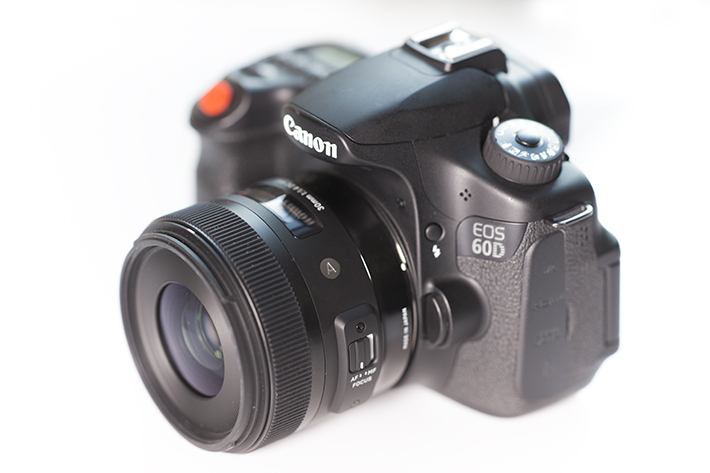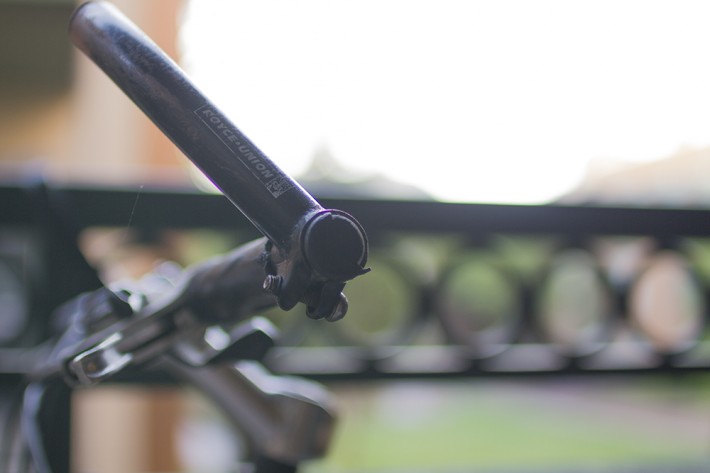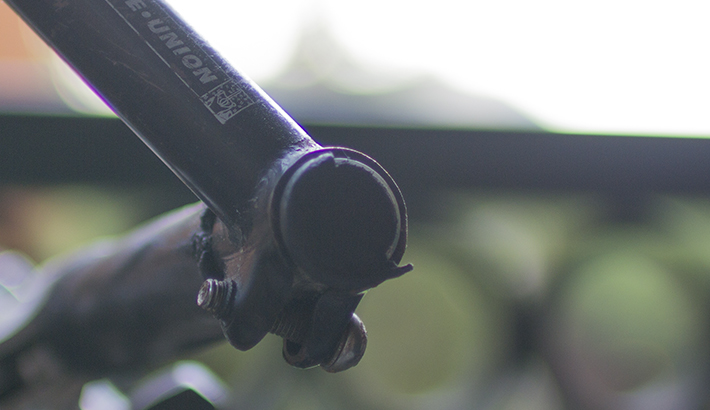Sigma, hot on the heels of the outstandingly successful 35mm f/1.4 Art lens, has been releasing and announcing new lenses in their Global Vision realignment like crazy. Recently they released the 30mm f/1.4 lens for APS-C cameras, and I had high expectations for it after being told that the president of Sigma was aiming it to meet the performance set by the 35mm. So did it?
One thing to note about the 35mm f/1.4 is that despite being amazing in nearly every category, it is a large and heavy lens. This is not necessarily a flaw, but when going with a smaller APS-C camera it makes what is generally a lighter and easier-to-manage package less light and easy to manage. In developing the 30mm f/1.4 specifically for these crop sensor cameras, it appears that size was discussed by the Sigma development team. The 30mm f/1.4 is half the size of the 35mm f/1.4, which means it’s easier to travel with due to reduced length and weight. However, my concern when first seeing how much more compact it is was, what did they have to cut out? What was sacrificed?
As it turns out, not much. It's a pretty darn good lens. However, it’s not quite as awe-inspiring as the famed 35mm f/1.4. Let's start with the good:
Where the 30mm shines is what it isn’t. That is to say, it’s an unobtrusive lens that performs where it needs to and doesn’t get between you and what you’re photographing. As I’ve said before, the best lenses are the ones that just let you work without distraction or hiccups.

I quickly snapped the image above just to give you an idea of scale. Though it's smaller, it's still a fantastic-looking lens. The last APS-C lens Sigma released, the 17-70mm, had a lot of plastic parts and felt light and a little flimsy. This is not the case for the 30mm f/1.4. It has a lot of metal parts that work well together with what plastic and rubber there is. The combination just looks slick. It carries on the new Sigma design that just about everyone is a fan of. Some folks still can't believe something with such a great design is a Sigma.
As with every lens in the new lineup from Sigma, I found the AF speed to be top notch. Sigma’s Hyper Sonic Motor is precicely that: it’s fast, quiet and, generally speaking, accurate. There were a few instances where it cycled in and out, trying to find the subject, but they were limited to relatively low light situations aimed at black targets. It also had issues with reflective surfaces, which can be irritating as I often shoot objects and products that are covered in reflections. I am not the normal kind of photographer though, and in most situations you won’t find poor auto focus performance slowing you down or getting in your way. Photographing landscapes and people won't be a problem (unless you're doing a shoot inside of a dark closet).
What matters to a vast number of photographers is, above all else, sharpness. It has to be spot on sharp as sharp can get or we aren’t interested. I’m happy to say that in no particular circumstance can I characterize the 30mm as blurry or dull. At every aperture from wide open at f/1.4 to fully closed at f/16, the lens is more than acceptably sharp. It has a sweet spot between f/5.6 and f/8, but for me this is splitting hairs.
This is the sweet spot at f/5.6:

Here is a sampling from the rest of the aperture range:
f/1.4 & f/1.8

f/2 & f/4.5

f/8 & f/10

f/13 & f/16

If you get in close and really scrutinize the details, yes you can most definitely see a difference and it’s not quite as sharp at f/1.4 and past f/10 as it is in its sweet spot. At its most wide open, you can see some chromatic aberration (more on that below) around the banana. At f/16 the image quality starts to wane slightly, but not much. However, you’ve really got to be looking closely to see the differences. Outside the sweet spot it still performs really well. Actually, outstandingly well compared to other lenses I've shot with. It's rare to find a lens that performs pretty consistently across the aperture range. While testing the 30mm, I found myself being more critical than I probably should, having been spoiled by the 35mm f/1.4. Is it as good as the 35mm? No, honestly it isn’t. Should it be as good based on what it is, who it is aimed at and how it is priced? No, it shouldn’t. It’s no all-star quarterback, but it’s a darn fine second choice in this department. Not quite Steve Young to Joe Montana status, but close.
So auto focus is good and sharpness is really good, but what about the other areas? What about vignetting and the aforementioned chromatic aberration? Unfortunately, I did run into problems here.
Vignetting never really bothers me. Like Lee Morris has said in the past, sometimes vignetting is a good thing. A lot of photographers add a vignette in post. If you don’t like it, Adobe Camera Raw does a good job of helping you eliminate it. However, if you’re a purist and hate a vignette rearing its head without your 100% consent, the 30mm f/1.4 does have some issues with a vignette wide open through f/2.8. Vignettes wide open are a relatively common issue with lenses at this price point and focal length, and here the 30mm is not the exception to the standard. The vignette is by no means terrible, but it is noticeable to the discerning eye.
I am more than willing to look past the vignette, but the one place where the 30mm let me down was in the chromatic aberration department. This sucker aberrates often all the way from wide open through f/4.5. Thankfully, by the time we get to the sweet spot the aberration vanishes for the rest of the aperture range. But wide open, you are going to run into issues. This is a real shame, because many of us would pick up this lens specifically for that wide-open aperture and it’s only at its most wide open where the issues exist. For every lens Sigma has released thus far, generally speaking the chromatic aberration has been manageable and only occurred in extreme or unusual circumstances. However, it seemed that no matter the light conditions or my whereabouts, the lens would find some way to show green and purple fringing around a contrast point. Let me be clear: it’s never enough to ruin an image, but it is very often present.
Like I said, my standards are extremely high now due to recent outstanding experiences with Sigma. It’s difficult to continue to keep to that level of awesome, and I respect that I’ll have to concede some points as time goes on.
I do really love the quality of the depth of field. Even on a smaller sensor, the wide open f/1.4 looks fantastic. You will love the control you have over light and the depth of field that you can get with this lens, especially given the price.
When used for video, the quality and operation was good, but I was hankering for some image stabilization of some sort. Light taps on a tripod will muddle up a shot (actually pretty normal) and hand holding is basically out of the question if you don’t want to make your viewers sea sick. This is not something I'm going to dock points for though, as Sigma hasn't put any IS (or in Sigma-speak, OS) on their Art lenses. That's not what they want to focus on with that line. When you are lined up and in focus, it works really well as a second camera for your wide shots. I usually shoot my main camera though a 5D MKIII and my secondary camera through a 60D. We did this recently in an Fstoppers Original shoot and I had this 30mm f/1.4 on the 60D. The footage looks darn good and I was pleased with the result. Just remember to tripod it (honestly always remember to tripod/stabilize everything).
What I liked:
Light weight and compact size
Beautiful build
Fast and quiet autofocus motor
High-quality sharpness throughout
What could use improvement:
Inconsistent accuracy of auto focus on dark or reflective surfaces
Some vignetting wide open
Pervasive chromatic aberration from f/1.4 through f/4.5
Besides my gripes with the chromatic aberration, the 30mm is a solid APS-C prime lens. It’s a fantastic second camera lens for video and is also a great choice if you’re trying to travel light. It’s not quite up to the standards set by the 35mm f/1.4, but it’s also almost half the price. For what issues it has, at this price point it’s a really good option especially if you want the DOF control that comes with a lens that opens as wide as f/1.4. For $500, it's not even too heavy on the wallet.
*All tests were done on a Canon 60D DSLR*










I really don't like the bokeh in the monkey example pics or is that just me?
My question is how does it compare to their previous version of the 30mm f1.4 (non-Art) lens that came out a few years ago? Would it be worth "upgrading" for any reason other than aesthetic design?
I actually prefer the looks of the previous version
No, you don't. The "Art" lens looks like Leica on steroids.
Way cool.
Is there some example with canon fullframe body? thx
this is for crop sensors - you wouldn't use it on a full body
There is the 35mm f/1.4 for the FF sensors.
Sigma is clearly better in all aspects when compared with the 35mm f/1.4 L.
Except, of course, it does not have the red stripe. The resell price will be lower as well.
I got the EF-S size 30mm and it just amazes me.
Just unpacked the "Art" 30mm f/1.4 and took it outside for a couple of shots.
First impression: Q U A L I T Y !
It is made of something that looks like metal, probably is. The lens hood is metal, it screws on sweetly and locks on with a high-priced 'snap' like Lexus or BMW or Merc...
I took some casual shots, blew them out and went like..."like-a".
These people are doing Leica. The pictures come so frigging sharp at 1.4 that you start regretting that you did not get the Real Thing, the 35mm for your FF sensor DSLR.
Now you go noise cancelling because you have a small sensor. Then you go sharpening.
I have mine on a Canon SL-1. On my 5D III I have the Canon 35mm f/1.4.
Should have got the Sigma.
These guys are now getting serious and they do know their business from making lenses for major brands since decades. The Sigma 'Art' series the stuff to go for if you want Q U A L I T Y.
I am impressed. This is one hell of a lens.
But: Not pocketable.
Like the iPhone.